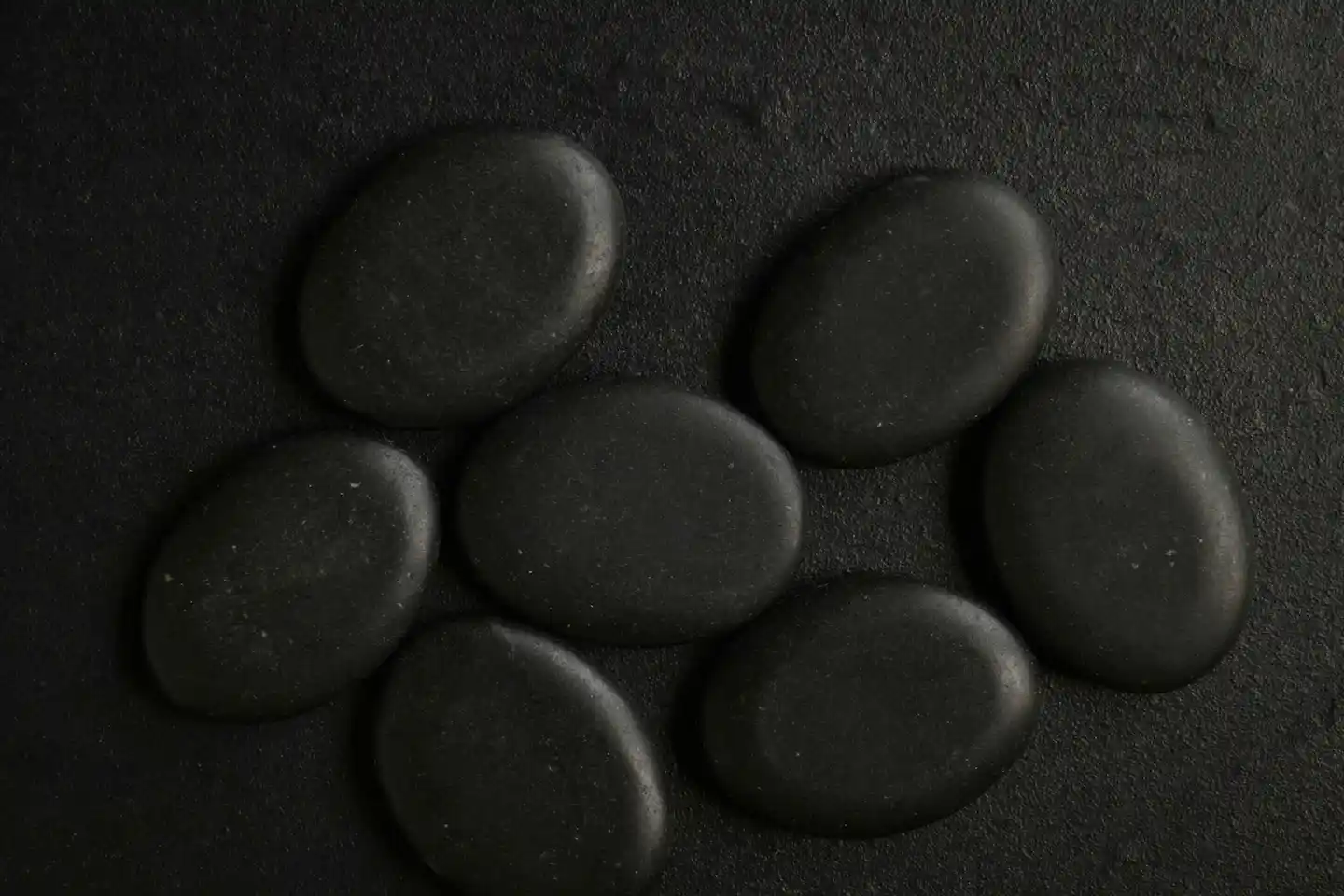Shungite has become increasingly popular in recent years, both as a grounding stone and for its protective qualities, particularly against electromagnetic fields (EMFs). With the rise in demand, there’s also a lot of imitation black stones being sold as “Shungite.” If you’re looking to verify the authenticity of your stones, there are a few simple tests you can do at home to make sure you’re working with the real thing.
Table of Contents
What Is Shungite
Shungite is a unique black, sedimentary stone primarily found in Russia, renowned for its distinctive carbon content and energetic properties. Composed mainly of fullerenes, a form of carbon molecule, shungite has been valued for centuries for its purported protective qualities. In recent years, it has gained popularity for it’s neutralizing effects against harmful electromagnetic radiation emitted by electronic devices. Additionally, many practitioners use shungite in healing practices, to aid in grounding, emotional balance, and physical detoxification by absorbing negative energies and promoting overall well-being.
Why FLFE Recommends Authentic Shungite for EMF Mitigation
Shungite is a unique component in the FLFE system because of its natural ability to interact with and mitigate electromagnetic fields (EMFs). Its high carbon content and conductive properties make it uniquely suited to support protection from the increasing EMF exposure we face daily from electronic devices, Wi-Fi, and our cell phones.
By wearing genuine Shungite, FLFE’s EMF mitigation enhances your environment with proven natural materials that help reduce EMF stress and promote a balanced, energized state.
For optimal support, we recommend wearing 7 grams or more of Shungite within the FLFE field. This amount helps maximize the stone’s natural ability to contribute to EMF mitigation, ensuring you get the fullest protective benefit from the FLFE High-Consciousness Field.
Types of Shungite
Shungite comes in different grades based on its carbon content:
Type I (also called Noble Shungite): About 90–98% carbon. This is the rarest and most expensive form. It has a shiny, silvery appearance and is very brittle, so it’s not commonly shaped into jewelry or pendants.
Type II (Regular/Black Shungite): Around 70% carbon. This is much more abundant, durable, and commonly used in pendants, beads, polished stones, or pyramids.
For practical everyday use, you don’t need the purest form of Shungite. Type II Shungite, with around 70% carbon, is very effective and far easier to work with.
How to Test Your Shungite
Test 1: Shedding Carbon
One of the simplest indicators of real Shungite is whether it sheds carbon. If you place your stone in a bag or rub it with your fingers, you may notice a black residue. This is the natural carbon content of the stone. Fake or painted stones won’t typically leave this powdery residue.
Test 2: Conductivity Test
Shungite is unique among stones because of its high carbon content, and it actually conducts electricity. This is something you almost never see in minerals. You can test its conductivity in two ways:
Using a voltmeter: If you’re comfortable with electrical tools, you can measure the resistance of the stone. Real Shungite conducts, whereas fakes won’t.
With a flashlight: This is a low-tech, easy method anyone can try. Find a flashlight that has its switch on the back, remove the head so the battery is exposed, and use your Shungite to bridge the battery’s contact point with the flashlight casing. If the flashlight turns on, you know your Shungite is conductive and authentic.
Test 3: Using a Cellphone
Another easy way to test your shungite, especially when in a crystal shop, is to use your cellphone. In the same way that you would use your finger to swipe on your phone, gently place the stone on the screen’s surface and see if you can swipe left or right.
Visual and Physical Signs Your Shungite is Real
Appearance: Real Shungite is solid black to deep gray, with a matte sheen. Type I will have a silvery, reflective look.
Weight: Being carbon-based, it’s relatively light compared to similar-looking stones.
Source: Genuine Shungite comes from only one place in the Karelia region in Russia. Always check the seller’s sourcing information.





